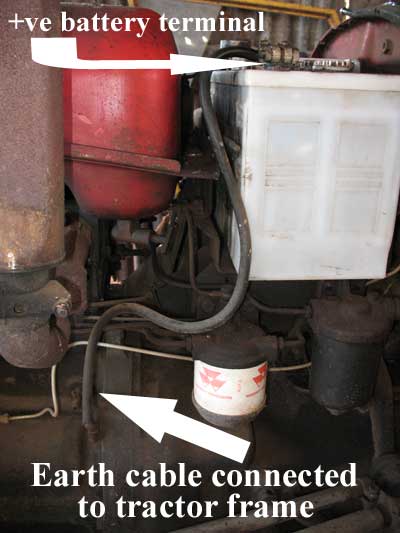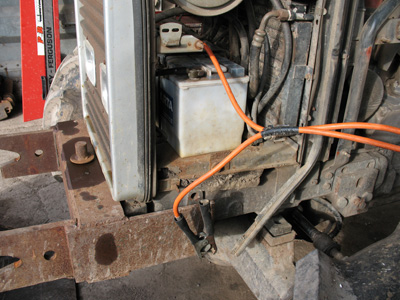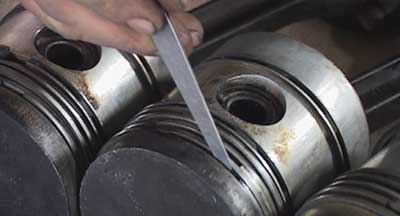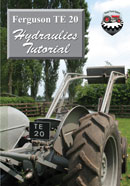Want to check out our tractor maintenance videos? Click here to see what we've got!
Tractor batteries can be dangerous, particularly if they are unknowingly faulty and emitting greater than normal amounts of hydrogen gas. The danger is that a spark can ignite the gas and explode the battery covering you, and anyone else in the vicinity, in highly corrosive sulphuric acid. Serious acid burns are a real possibility. When using jump leads make sure the ends do not accidently contact each other and be careful not to catch the lead ends on the tractor frame or battery retaining bracket.
The first thing to ascertain is the earth arangement on the vehicles (i.e. positive earth [+ve] or negative earth [-ve]). On a negative earth tractor (most modern vehicles) the -ve battery terminal is attached to the tractor framework, whilst the +ve terminal is attached to the starter solenoid. On a positive earth tractor the +ve battery terminal is attached to the tractor framework (see photo below of MF35 with positive earth), whilst the -ve terminal is attached to the starter solenoid.
Before attempting to jump start a vehicle make sure that all terminals and connections are clean. Use jump leads with good thick cable (to transmit the power) and strong rust free clips.
The terminals on the battery will be clearly marked. The positive terminal is marked with a ‘+’ sign and the negative terminal is marked with a ‘-’ sign. The positive terminal is also larger than the negative terminal.
It the following descriptions we will call the tractor that won’t start the recipient. We will call the tractor that is already started the donor. It is imperitive that you follow the order in which the instructions are written. The photo below is an example of scenario 1, as you can see the black lead has been attached to the recipient tractor frame (this was the final lead to be connected).
Scenario 1. -ve earth donor to -ve earth recipient.
1 Red lead. Connect one end to donor +ve.
2 Red lead. Connect other end to recipient +ve.
3 Black lead. Connect one end to donor -ve
4 Black lead. Connect other end to tractor frame on recipient (i.e. not to battery terminal)
Scenario 2. +ve earth donor to +ve earth recipient.
1 Black lead. Connect one end to donor -ve.
2 Black lead. Connect other end to recipient -ve.
3 Red lead. Connect one end to donor +ve.
4 Red lead. Connect other end to tractor frame on recipient.
Scenario 3. -ve earth donor to +ve earth recipient.
1 Black lead. Connect one end to donor -ve.
2 Black lead. Connect other end to recipient -ve.
3 Red lead. Connect one end to donor +ve.
4 Red lead. Connect other end to tractor frame on recipient.
Scenario 4. +ve earth donor to -ve earth recipient.
1 Red lead. Connect one end to donor +ve.
2 Red lead. Connect other end to recipient +ve.
3 Black lead. Connect one end to donor -ve.
4 Black lead. Connect other end to tractor frame on recipient.
Scenario 5. Using spare battery.
1 Connect spare battery to non-earth terminal first.
2 Connect spare battery to tractor frame for the last connection
If the recipient tractor has an extremely dicharged battery it may be necessary to run the donor tractor for 10-15 minutes at half engine revs before starting the recipient.
Jump leads should always be removed in the reverse order to which they were connected.
Good luck !







